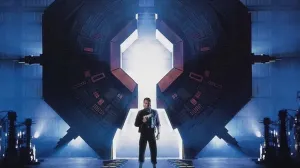One of actor Paul Walker‘s breakout roles came in 2001’s The Fast and the Furious as a cop going undercover in the world of street racing. Walker would become a staple of the series, regularly reprising his role as the franchise dwindled in popularity, only for it to return and become one of Hollywood’s most successful properties. Tragically, a car accident took Walker’s life while Furious 7 was still in production, requiring the entire film’s narrative to be reworked to utilize previously captured footage, while using a number of CGI effects to help give his character a proper sendoff. Visual effects artist Martin Hill recently detailed the experience and the pressures he felt to get the job done to honor not only Walker but also his fans.
Videos by ComicBook.com
“There was a lot of pressure to be able to do that,” Hill recently detailed to ComicBook.com. “We’ve been making digital characters, digital humans, for a long time at Weta Digital, as have many other places, and there’s always been varieties of success. Like invisible effects, you tend not to notice it when it is working well and tend to see it if it’s sitting in the uncanny valley, which is something that we just absolutely had to avoid. So going into that, that was 2013, 2014, technology wasn’t quite there. So it was a lot of R & D that we had to put into making sure we could create the character. And of course we didn’t have the live action … Paul wasn’t there to actually reference directly, so we were also working with a diminished data set.”
In addition to reimagining the storyline and the overall film, Walker’s brothers Cody and Caleb served as body doubles, allowing Weta Digital to scan the actor’s face onto their bodies for certain sequences. Luckily, the talented artists at Weta Digital were up to the task, giving Hill the confidence that a seemingly impossible challenge could be pulled off.
“It only takes one bad shot to take you out,” Hill noted. “In discussions with the production, when doing it, we often shot alternate shots, which would’ve been a little bit easier. So if the shot didn’t work, or the VFX didn’t work, we could always jump to a more simplified edit, if you like, and have more confidence that we could still make the movie without it looking bad. As it turned out, we barely ever used any kind of these secondary plates, because it did turn out really well, which was a fantastic testament to all the artistry here at Weta Digital.”
He added, “The whole remit was to make sure that in the 300 or so shots that we made of Paul Walker was that no one could tell. And by and large, people couldn’t. We’d put this enormous amount of work and, to a certain extent, no one noticed. But that’s essentially the job, and I’m really proud of all the work that went in that.”
Furious 9 is set to land in theaters on May 22, 2020. You can learn more about Weta Digital at their official website.
What do you think of the process of portraying Walker in the film? Let us know in the comments below!








